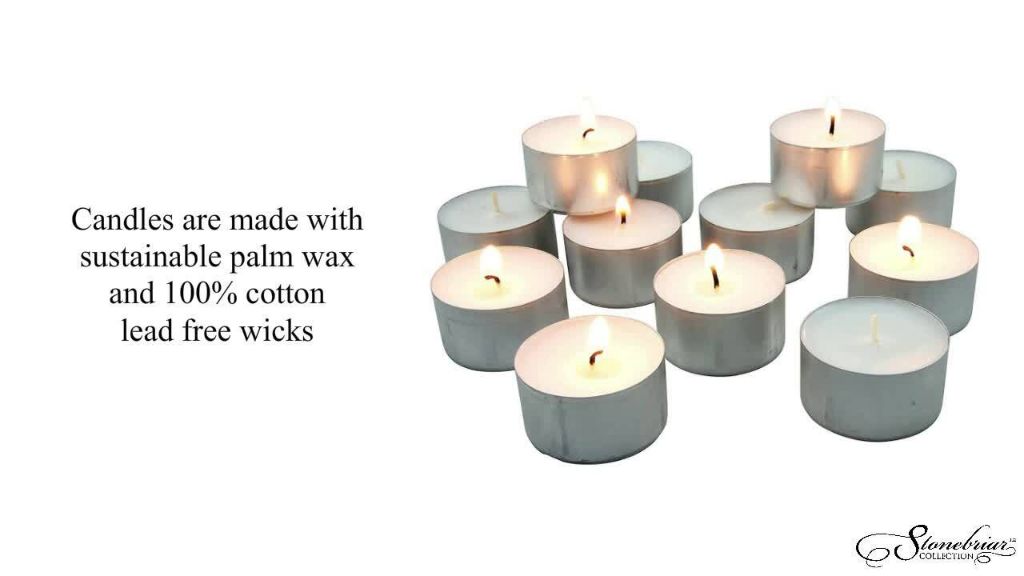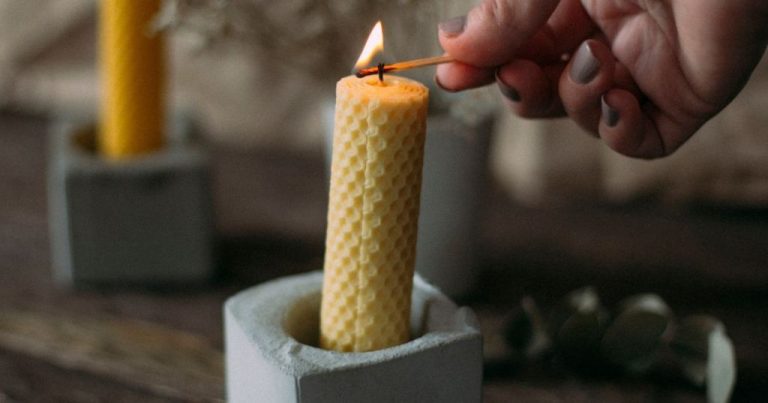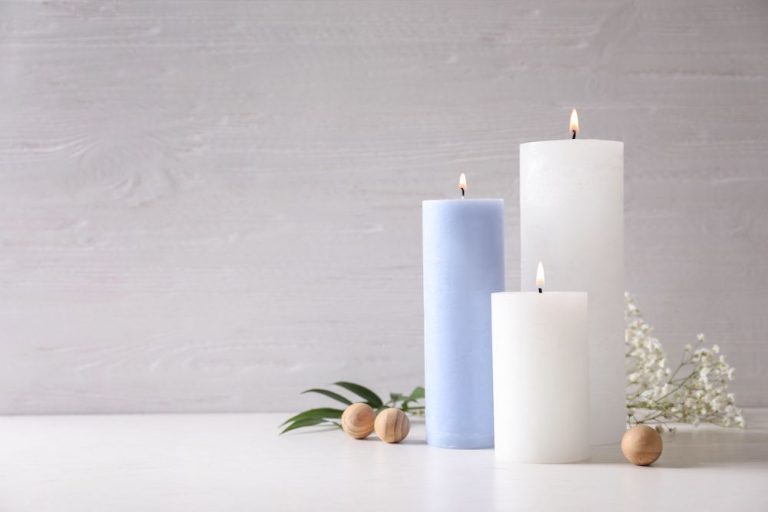How Much Essential Oil Do You Put In A Candle?
Essential oils have been used for centuries in candle making to add natural fragrance. When added to wax, essential oils release aroma as the candle burns, creating a pleasant ambiance. The key to effectively using essential oils in candles is understanding proper usage rates and blending techniques. Adding too much or too little can impact performance. This guide provides tips on selecting essential oils, recommended usage percentages, measuring, blending, testing, and safely enjoying homemade scented candles.
Function of Essential Oils in Candles
The primary purpose of adding essential oils to candles is to provide fragrance. The natural oils impart pleasing scents that enhance the ambience created by the candlelight. Specific essential oils can be selected to create certain moods or promote wellness through aromatherapy.
For example, many people find the scent of lavender essential oil to be relaxing. Adding lavender oil to a candle can help create a calm, soothing environment (Source). Eucalyptus, peppermint, and rosemary oils are considered energizing. Candles containing those oils may help boost alertness or concentration.
Beyond influencing mood and atmosphere with their aromas, essential oils also provide the actual fragrance of scented candles. Without essential oils or other fragrance additives, candles would lack scent when burning.
Factors That Determine Amount
There are a few key factors that determine how much essential oil to use when making candles:
Candle Wax Type
The type of wax used in candle making plays a role in how much fragrance it can hold. Harder waxes like soy wax and palm wax generally require a higher fragrance load between 6-8%. Softer waxes like paraffin and beeswax tend to need less essential oil, around 4-6% (Rocky Mountain Oils).
Candle Size
Larger candles need more fragrance than smaller candles. A good guideline is to use 0.5-1 ounce of essential oil per pound of wax. So for a 1 pound candle, use 0.5-1 oz of oil. For a 3 pound candle, use 1.5-3 oz (Thompson Ferrier).
Fragrance Strength
Some essential oil scents are stronger than others. Citrus, herbaceous, and mint oils tend to be lighter while florals, resins, and spice oils are more powerful. Stronger scents require less oil. Test different amounts to achieve the desired fragrance strength.
Recommended Usage Rates
The amount of essential oil you use in candle making depends on the type of candle you are making. Here are some general guidelines:
For container candles, use 1-2% essential oil. Container candles have a larger wax pool than pillars or votives, so less fragrance is needed. According to CandleScience, 1-2% is usually enough to create a nicely scented candle in a container [1].

For pillar candles, use 5-8% essential oil. Pillar candles have a smaller wax pool compared to containers, so a higher fragrance load is recommended. CandleScience suggests 5-8% for hand-poured pillar candles to achieve adequate scent throw [1].
For votive candles, use 10% essential oil. Votive candles have the smallest wax pool and burn the hottest, so they require the highest fragrance load. Aldrome recommends using up to 10% essential oil in votive candles for best results [2].
Measuring Essential Oils
When adding essential oils to candle wax, it’s important to measure them precisely using weight instead of volume. This is because essential oils are highly concentrated, so small variations in volume can make a big difference in fragrance strength. For consistent results, use a digital kitchen scale to weigh out the essential oils.
Scales allow you to easily measure the small amounts of essential oils used in candle making, down to a fraction of a gram. Trying to measure by volume using teaspoons or droplets can lead to inaccuracy. Even small variations can significantly alter the intensity and smell.
The concentrated nature of essential oils means a little goes a long way. A few grams added to pounds of wax can provide plenty of fragrance. By weighing on a sensitive digital scale, you have precise control over the quantity.
Adding Essential Oils
There are a few methods for incorporating essential oils into candle wax:
Directly to Wax
Most candle makers recommend adding essential oils directly to melted wax rather than to the jar. This helps ensure thorough blending and an even scent throw. The typical usage rate is 1 ounce of essential oil per 1 pound of wax (Edens Garden, 2021).
Using Fragrance Oil
Another option is to blend essential oils into a candle fragrance oil before adding it to melted wax. Fragrance oils help essential oils disperse evenly. Aim for a 5-10% essential oil concentration in the fragrance oil (RuntoRadiance, 2017).
Blending with Other Oils
Essential oils can be combined with carrier oils like coconut oil before adding to wax. This helps dilute the essential oils and make them safer for skin contact. Use a 2-5% essential oil concentration in the carrier oil blend (RuntoRadiance, 2017).
Testing Fragrance Strength
Properly testing the fragrance strength is crucial to achieving the right scent throw in your finished candle. Here are some tips for testing and adjusting the essential oil amount:
First, make sure to cure the freshly poured candle for at least 1-2 weeks before testing. This allows the fragrance to fully bind with the wax. According to BrambleBerry, “When making a new candle, we recommend testing the fragrance starting at 6% of the wax weight.”
Conduct initial test burns in small containers without lids to allow fragrance to disperse. Let the candle burn for at least 2 hours, then extinguish and let cool completely. Return after 1 hour and note scent strength in the air. Per Craft Server forums, a light test burn “gives you a general idea of hot and cold throw.”
Based on the test burn results, adjust the amount of essential oil up or down in increments of 0.5-1% until reaching the desired scent strength. According to CandleScience, testing is key because “the amount of essential oil recommended in candle wax varies quite a bit depending on the essential oil.”
Safety Precautions
When using essential oils in candles, it’s important to take proper safety precautions. Here are some key things to keep in mind:
Proper ventilation is crucial when burning candles containing essential oils. The National Candle Association recommends keeping burning candles away from drafts, vents, ceiling fans, and air currents to prevent rapid or uneven burning (www.candles.org). Burn candles in a well-ventilated room and avoid stacking multiple fragrance candles close together.
Some essential oils can irritate sensitive skin when exposed to the concentrated oil. It’s smart to do a patch test before using a new essential oil. According to Green America, essential oils like cinnamon, clove, citrus, peppermint, pine, wintergreen, and ylang ylang are common irritants for skin (www.greenamerica.org/toxic-candles). Wear gloves when handling pure essential oils.
Essential oil candles can be hazardous to pets, especially cats. The ASPCA recommends keeping all forms of essential oils away from cats, as they lack the enzyme to break down the oils which can cause liver damage or other medical issues (www.aspca.org/pet-care/animal-poison-control/toxic-and-non-toxic-plants/essential-oils). Dogs can also be harmed by essential oil toxicity. Keep pets away from burning candles containing essential oils.
Storing Candles
Proper storage is important for preserving candles made with essential oils. Exposure to light and heat can cause the essential oils to fade more quickly. Store finished candles in a cool, dark place inside tightly sealed containers to prevent fragrance loss and evaporation. Well-wrapped candles kept at about 60-72°F and away from direct sunlight and heat vents may retain their aroma for up to 1 year (source 1). Make sure lids are secure and jars or tins are clean to prevent dust and debris from getting into the wax. With proper storage techniques and avoiding temperature extremes, you can prolong the life of your essential oil candles.
Summary
The amount of essential oil to add to candles depends on several factors like candle size, wax type, number of oils, and desired scent strength. Usage rates typically range from 3-10% of wax weight. Measure oils precisely with a scale or volumetric measures. Add oils directly to wax as it melts or cool melted wax slightly before blending. Test candles to ensure adequate but not overwhelming fragrance. Take safety precautions like avoiding fragrance oils around pets. Store finished candles properly to preserve scent. The key points are:
- Use 3-10% essential oil per wax weight depending on factors
- Measure oils carefully with scale or drips
- Add to melted wax at ideal temperature
- Test scent strength before finishing candle
- Take precautions with essential oils
- Store candles properly to maintain fragrance
Following these guidelines will result in well-scented, high quality candles.






